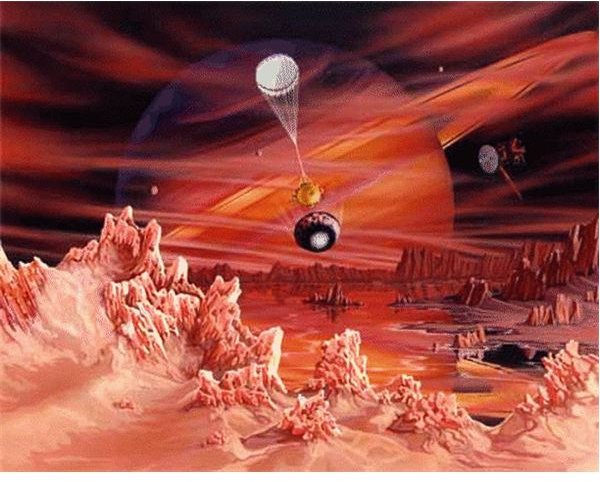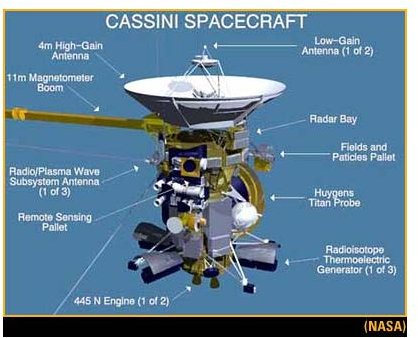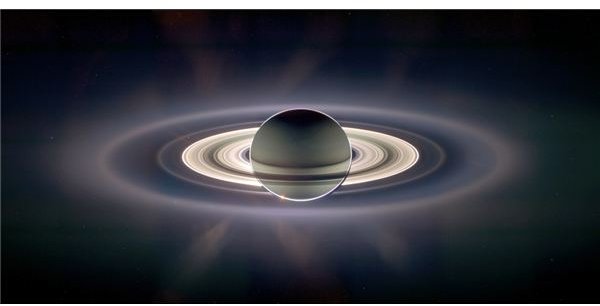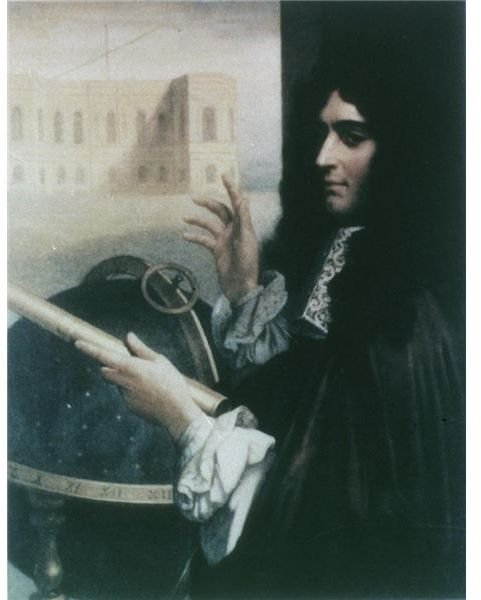Mission Cassini - the amazing study of Saturn and its moons. A new home for mankind?
Mission overview
The Cassini Mission is the project of NASA, the European Space Agency (ESA), and the Italian Space Agency. The Jet Propulsion Laboratory (JPL) in Pasadena manages the mission for NASA, and JPL is where the Cassini orbiter was designed and constructed. Launched in October 1997, the Cassini orbiter had to travel 3.5 billion miles and seven years to reach its destination, Saturn, but the data collected from the mission has been well worth the wait. The imaging portion of the mission is overseen by Carolyn Porco. In June 2004 the Cassini spacecraft entered Saturn’s orbit and began a four-year data collection tour of the planet, its rings, and its moons.
Titan
The Cassini Mission’s spacecraft has performed over 70 gravity-assisted missions to Titan, Saturn’s largest moon, and dozens of missions to Saturn’s smaller moons. On December 25, 2004 the Huygens probe separated from the Cassini spacecraft, and in January 2005 the probe dropped through Titan’s atmosphere, collecting data as it went. The camera on the Huygens probe picked up stunning photos of Titan’s landscape of steep mountains cut through by ancient river-cut canyons and dry lake beds. The pictures looked much like an earthen desert landscape.

Cassini Spacecraft
The Cassini spacecraft’s 12 instruments examined Saturn across the electromagnetic spectrum from far ultraviolet wavelengths to microwave wavelengths. Some instruments were able to directly sample particles and magnetic fields around Saturn. And, of course, Cassini sent back a wealth of amazing pictures.

Cassini’s Discoveries
Cassini also made some unexpected discoveries, like previously unknown tiny moons. It also captured images of structures in Saturn’s rings forming, transforming, and dissipating. The Cassini data did much to augment the data gathered earlier by the Voyager spacecraft of Saturn’s moons. The Voyager 1 and 2 spacecrafts are still operational, after having been launched in 1977. They are currently the farthest manmade objects from earth, and are over 10 billion miles away from the sun. Because of the fortunate alignment of the planets at the time of its launch, Voyager was able to visit the so-called “gas giants,” planets Jupiter, Saturn, Uranus, and Neptune.

Following the Voyager
In November 1980, Voyager 1 came within 124,000 km of Saturn’s cloud tops, discovering complex structures in the planet’s rings, and gathering atmospheric data of Saturn and Titan. The choice was made at that time by JPL scientists to let Voyager 1 terminate its “grand tour” of the planets by descending into the atmosphere of the moon Titan. The Cassini spacecraft has added an astounding amount of information to Voyager 1’s data.
Yet to come!
One of Cassini’s most exciting missions may be yet to come. In its extended mission, which has been going on since July 2008, Cassini plans a mission called “Equinox.” In August 2009, Saturn’s equator will be oriented directly toward the sun. When the Saturnian equinox takes place on August 11, the sun will set on the southern aspect of the rings and rise above the northern aspect of the rings. This only happens once in every 15 earth years, and Cassini is poised to collect an amazing batch of information, including photos.
New Home for Mankind?
Also in its extended mission, Cassini will make close approaches to the moon Titan, and also the moon Enceladus, intriguing due to its Earthlike appearance. In late 2008, Cassini observed water vapor spewing from the surface of Enceladus, a moon whose southern pole is the site of fascinating tectonic activity. Data already gathered by Cassini has shown Enceladus to have potential habitability.

References
Content:
https://www.sciencemag.org/cgi/content/full/311/5766/1393
https://en.wikipedia.org/wiki/Enceladus_(moon)#Possible_liquid_water
https://en.wikipedia.org/wiki/Voyager_1
https://www.azstarnet.com/sn/byauthor/238531
https://www.sciencecentric.com/news/article.php?q=08063001
https://www.boston.com/bigpicture/2009/04/cassinis_continued_mission.html
Images:
https://www.daviddarling.info/images/Cassini3.jpg
https://matter-and-spirit.com/Portals/26/Blog/Files/14/73/newrings_cassini1000.gif
https://seds.lpl.arizona.edu/Messier/Pics/Hi-res/cassini_big.jpg
https://www.sstd.rl.ac.uk/news/Cassini/images/soi_lg.gif
https://www.lpi.usra.edu/science/kiefer/Education/SSRG2-Europa/titan8.gif
